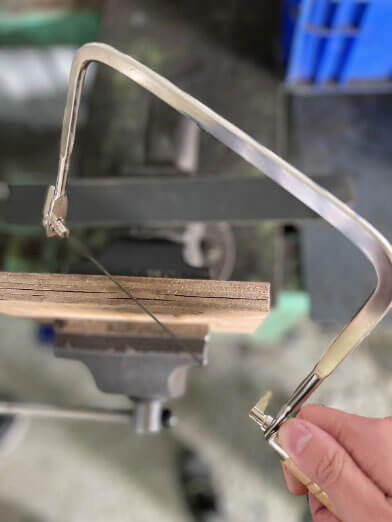What Materials Does a Coping Saw Cut? The Ultimate Guide for Woodworkers, DIYers, and Professionals

A coping saw is a versatile and essential hand tool found in workshops, classrooms, and toolboxes around the world. Known for its fine cutting ability and maneuverability, the coping saw is perfect for intricate tasks—but what materials can it actually cut?
In this guide, we’ll explore the types of materials coping saws are best suited for, along with tips to match the blade and TPI (teeth per inch) to each application.
1. Wood (Softwood & Hardwood)
Primary use:
Coping saws are most commonly used for cutting wood, especially when detailed or curved cuts are needed. Whether you're working on furniture, baseboards, or scrollwork, this tool shines in woodworking applications.
Best blade:
- 10–16 TPI: for fast, rough cuts in softwood
- 18–24 TPI: for cleaner, smoother cuts in hardwood or when working with fine joinery
Tip: For decorative or curved cuts, use a higher TPI for better control and finish.
🧱 2. Plastic (PVC, Acrylic Sheets)
Secondary use:
Coping saws can easily handle cutting plastic pipes (like PVC) or plastic sheets for model building or plumbing.
Best blade:
- 18–24 TPI: works well for most plastics
- Use a steady, slow pace to avoid melting due to friction heat
Tip: Mark your cut line clearly and avoid applying too much pressure to prevent cracking.
3. Soft Metals (Aluminum, Copper, Brass)
Occasional use:
With the right blade, a coping saw can cut through thin sheets or small tubes of soft metal, such as aluminum flashing or copper piping. Common in light metalworking, electrical, or plumbing work.
Best blade:
- 24–28 TPI: fine-toothed blades for smooth, precise results
- Use a lubricant (e.g., wax or oil) to reduce heat and wear
Tip: Avoid using on thick or hardened metals, as coping saws are not designed for heavy-duty metal cutting.
🎨 4. Foam Board and Composite Materials
Craft and hobby use:
Perfect for model-making, classroom projects, or DIY crafts, coping saws can be used to cut foam board, cork, and similar materials.
Best blade:
- 15–24 TPI: depending on the thickness and density
Tip: Keep the blade tension tight to prevent bending when working with lightweight materials.
❌ Materials to Avoid
While versatile, coping saws are not suitable for:
- Concrete or masonry
- Steel or other hardened metals
- Thick, dense hardwoods over 1" without a powerful saw
- Glass or ceramics
🔧 Choosing the Right Blade for the Material
| Material Type | Recommended TPI | Notes |
|---|---|---|
| Softwood | 10–16 TPI | Fast cutting, less smooth |
| Hardwood | 18–24 TPI | Cleaner, more precise cuts |
| PVC / Plastic | 18–24 TPI | Avoid overheating |
| Aluminum / Copper | 24–28TPI | Use light pressure |
| Foamboard | 15–24 TPI | Ideal for models or crafts |
✅ In Summary: The Coping Saw is More Than Just a Wood Tool
Whether you’re a professional carpenter, DIY hobbyist, or student, knowing what materials your coping saw can cut—and choosing the right blade—makes all the difference. With proper technique and blade selection, this compact tool becomes a reliable partner for precision work across a wide range of materials.
